|
My novella, FUSED: TRAINING DAY, features several fascinating creatures. The most bizarre of these happens to be an extinct lizard. It's not really an animal you want to have in your living room. Way back in 1995, when Trish and I were on our first trip to Australia, we visited a natural history museum in Brisbane. There was a dark display hall with a carefully-reconstructed primeval forest. The star of the show in that forest (in my opinion) was a model of a massive monitor lizard called a megalania. That creature has stuck in my mind ever since, and I have always known I would find a way to have one show up in one of my stories. So, since I just released FUSED: TRAINING DAY, this is also the perfect time to feature the megalania as an Awesome Animal! What the heck is a Megalania? During the Pleistocene (2.5 million years to about 12,000 years ago), fierce mammal predators, such a saber-toothed cats, ruled most of the world. But not so much in Australia. The apex predators in Australia were reptiles, including land-dwelling crocodiles, enormous snakes, and huge monitor lizards. The megalania was the largest of these monitor lizards. The megalania (Megalania prisca or Varanus priscus) lived from about 1.6 million years ago to about 40,000 years ago. It is also called the giant goanna (goanna is the name given to certain monitor lizards, particularly in Australia). Amazing facts about the megalania Okay, the first thing we need to do is figure out exactly how big these things were. The megalania is touted as the largest terrestrial lizard to have ever roamed the earth. Is this true? The largest living lizard is the Komodo monitor (the Komodo dragon), which can grow to be 10 feet (3 m) long and weigh 150 pounds (70 kg). We'll use the Komodo as a standard for comparison. The strange thing is, the assumed size of the megalania has changed greatly based upon different studies that have been done. Why? because complete fossil skeletons are rare. The earliest estimates put megalanias at about 23 feet (7 m) long and about 1370 pounds (620 kg). In 2009, the megalania was downgraded to 18 feet (5.5 m) and 1,268 pounds (575 kg). The author of the study argued that the previous estimates used flawed methods. However, in a completely different study published in 2004, Ralph Molnar did a very comprehensive study comparing fossil megalania bones to the bones of two different living monitor lizards. One was the lace monitor, which is long and thin, and the other was the Komodo monitor, which has a thicker body. The conclusion? If the megalania was shaped more like the lace monitor, it was 26 feet (7.9 m) long. If the megalania was shaped more like the Komodo monitor, it was 23 feet (7 m) long. The largest individuals would have weighed 4.280 pounds (1,940 kg)! Yeah... I know what you're thinking. What difference does it make, right? Whether it's 1,200 pounds or 4,200 pounds, this was a big honkin' lizard—way, way bigger than a Komodo dragon. In the diagram below, 3A is the small estimate, 3B is the large estimate. Lizard 1 is the Komodo dragon (the largest lizard living today). It's important to remember that we aren't talking about a dinosaur. Dinosaur skeletons were structured very differently from lizard skeletons. Dinosaurs had legs positioned directly beneath their bodies, able to support vast amounts of weight. Lizards, though, have legs that extend out to the sides. With no direct support from underneath, lizards simply cannot grow all that large. Most lizards are the size of your hand or smaller. Many are smaller than your pinky finger. So, the megalania was a big lizard. If you saw a 4,000-pound predatory lizard coming your way, you would probably want to make yourself scarce. As if the size wasn't intimidating enough, these lizards were probably venomous. You read that right. The megalania belongs in a reptile group (specifically, a clade) called Toxicofera, which includes all the reptiles that have venom-producing glands in their mouths. Here's how this venom works (based on what we know about living monitor lizards with venom, such as the Komodo dragon). The vemon, produced in the lizard's jaw, is a hemotoxin. This means it attacks the blood. Specifically, it prevents the blood from clotting. So... the lizard bites the heck out of its prey (Komodo dragons have a seriously nasty bite), the prey starts to bleed, and the hemotoxin greatly increases the bleeding. Soon, the prey animal goes into shock and collapses. Then... lizard lunch! Because of the megalania's hemotoxic venom, these lizards were probably capable of taking down very large prey. The painting below shows a megalania stalking a herd of huge herbivorous marsupials. Check out this video about the megalania (kind of long but informative). Below are two Komodo monitors fighting. They are each probably about 7 feet (2.1 m) long. Now, picture what this would look like of they were each 23 feet (7 m) long! Several hypotheses have been formed to explain the extinction of megalanias, which happened about 40,000 to 50,000 years ago. First, some people suggest they went extinct after several large prey species went extinct, specifically Diprotodon and Procoptodon. When these animals disappeared, there was simply not enough food to support a population of such large lizards. Second, some people think the first humans to colonize Australia may have hunted megalanias to extinction (try to imagine hunting an adult megalania with primitive weapons!). This hypothesis is supported by the fact that humans entered Australia at about that time. Third, it seems likely that their extinction was caused by a combination of #1 and #2 above. Perhaps humans burned huge swaths of forest, and in doing so they killed off the food supply for megalania prey species. And... fourth, some people like to believe that megalanias are still alive, with isolated populations hidden in remote areas of Australia. There have been stories of large footprints found, cattle killed with suspicious bite marks, and so on. BUT... as cool as it would be to find living megalanias, the possibility is HIGHLY UNLIKELY. So, the Megalania deserve a place in the P.K.A.H.O.F. (Peachy Keen Animal Hall of Fame). FUN FACT: The adjective phrase peachy keen was popularized (and probably invented) by a Los Angeles DJ named Jim Hawthorne around 1948. The young DJ, it seems, was bored with his job. One night, without notifying his bosses, Hawthorne turned his show into a wild, carefree program he referred to as "Hellzapoppin on the air." Before the station could fire him, they were inundated with fan mail. The program soon exploded in popularity. One of Hawthorne's signature phrases was "Oh so peachy keen." Well, the phrase is still being used, and it means excellent, wonderful, and fine. So, peachy keen is another way to say awesome! Photo Credits:
Megalania #1 - Dinosaur Park Size diagram - Wikimedia Commons Fighting Komodo monitors - DepositPhotos Megalania stalking marsupials - Laurie Beirne via Science Magazine Megalania pursuing a Bullockornis - Peter Trusler, via Monash University on Flickr via NatGeo
0 Comments
Leave a Reply. |
Stan's Cogitations
Everyone needs a creative outlet. That's why I write. Archives
July 2024
|

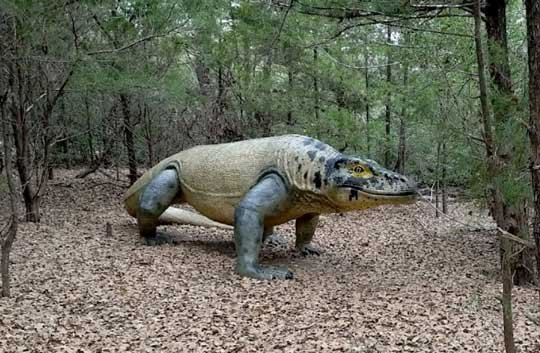
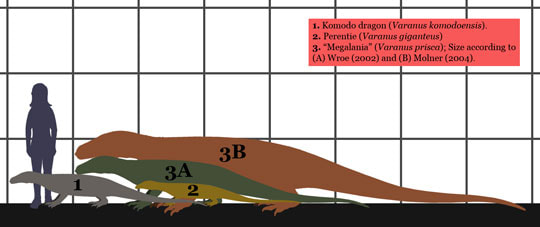
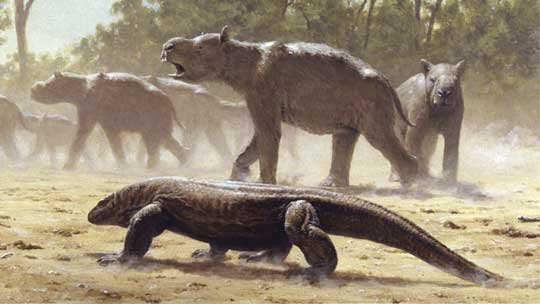
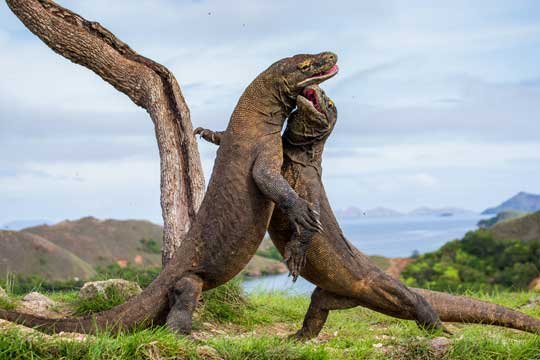
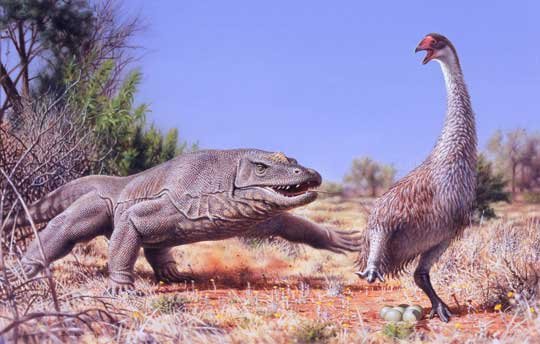
 RSS Feed
RSS Feed